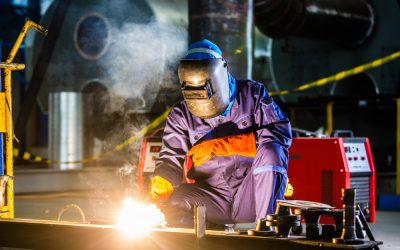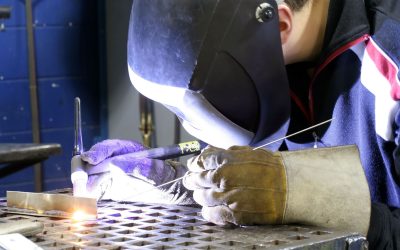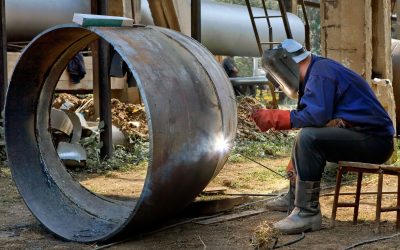There are many different names used in different industries to denote the studs used to connect a metal beam, girder or structural component to a concrete slab. While there are some technical differences in the terms, in general use they may be called shear connectors, shear studs, headed studs or headed anchors, or any combination of these terms.
These shear connectors or studs are welded to the metal beam, girder or other structural component using a stud welding system. This produces a fast, incredibly hot arc that creates an instant molten pool and also plunges the shear connector down, ensuring a full weld across the entire surface.
A small ceramic ferrule is also used in this type of stud welding operation. It acts to contain the molten pool in the fraction of a second before the shear stud is plunged down into the surface, while also acting as a shield to enhance the process. The ferrule is simply knocked off the shear studs after the process.
Surface Prep
As with any type of welding process, a clean surface is instrumental in an effective, durable weld. Cleaning all debris, oil, grease, dirt or pools of water from the surface is essential before starting the job.
In some cases, the metal beams or girders may have significant areas of rust. As rust can inhibit the effectiveness of the weld in any type of welding process, it is essential to use a wire brush or other type of abrasive process to remove the rust and leave the metal bare for welding.
The Stud Welding Process
It is important to test weld a few shear studs to ensure the correct setting and operation of the hand held tool and the power source. This allows for adjustments to be made to ensure a complete weld can be done based on the specifics of the metal beam and the settings of the system.








